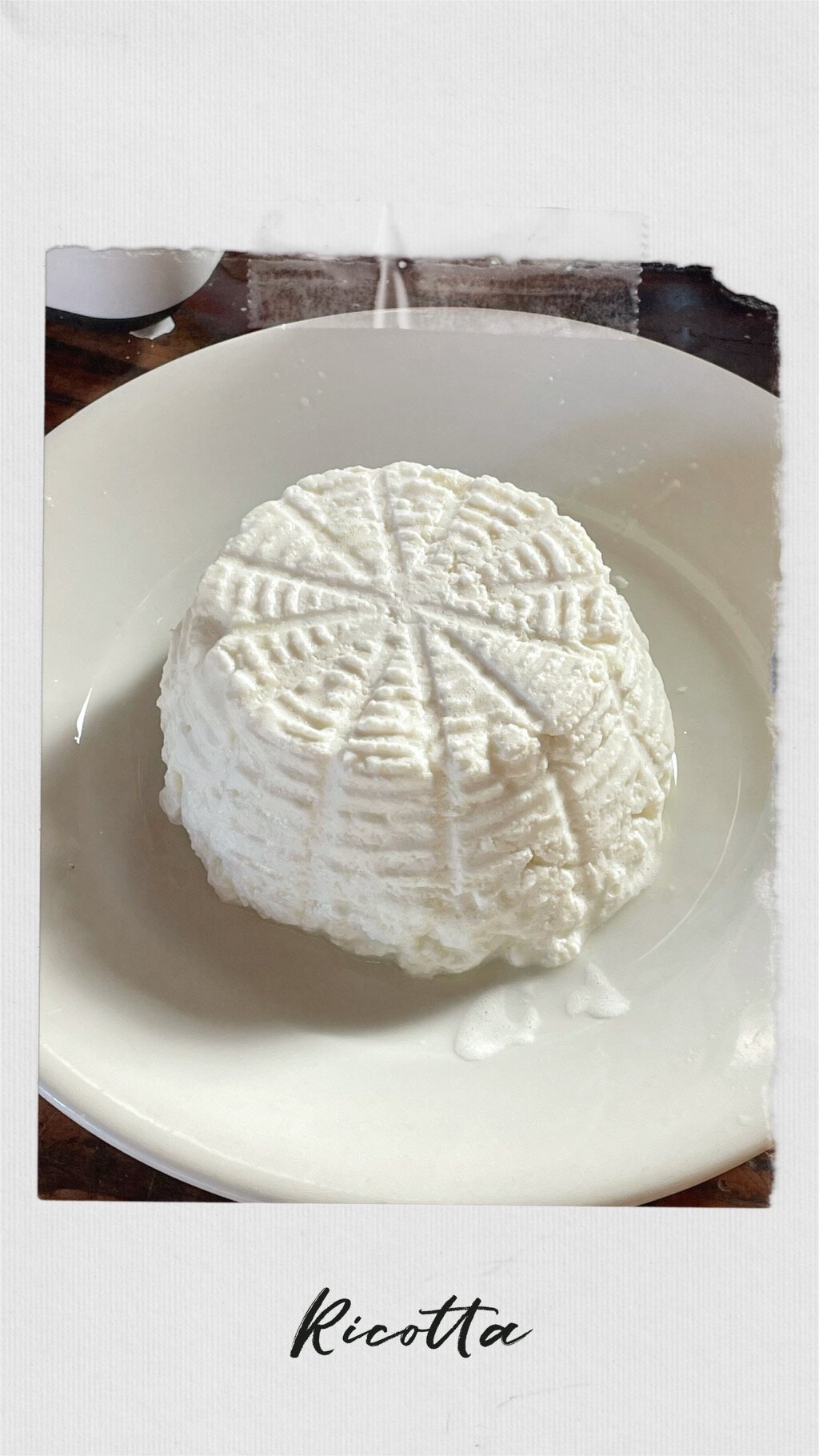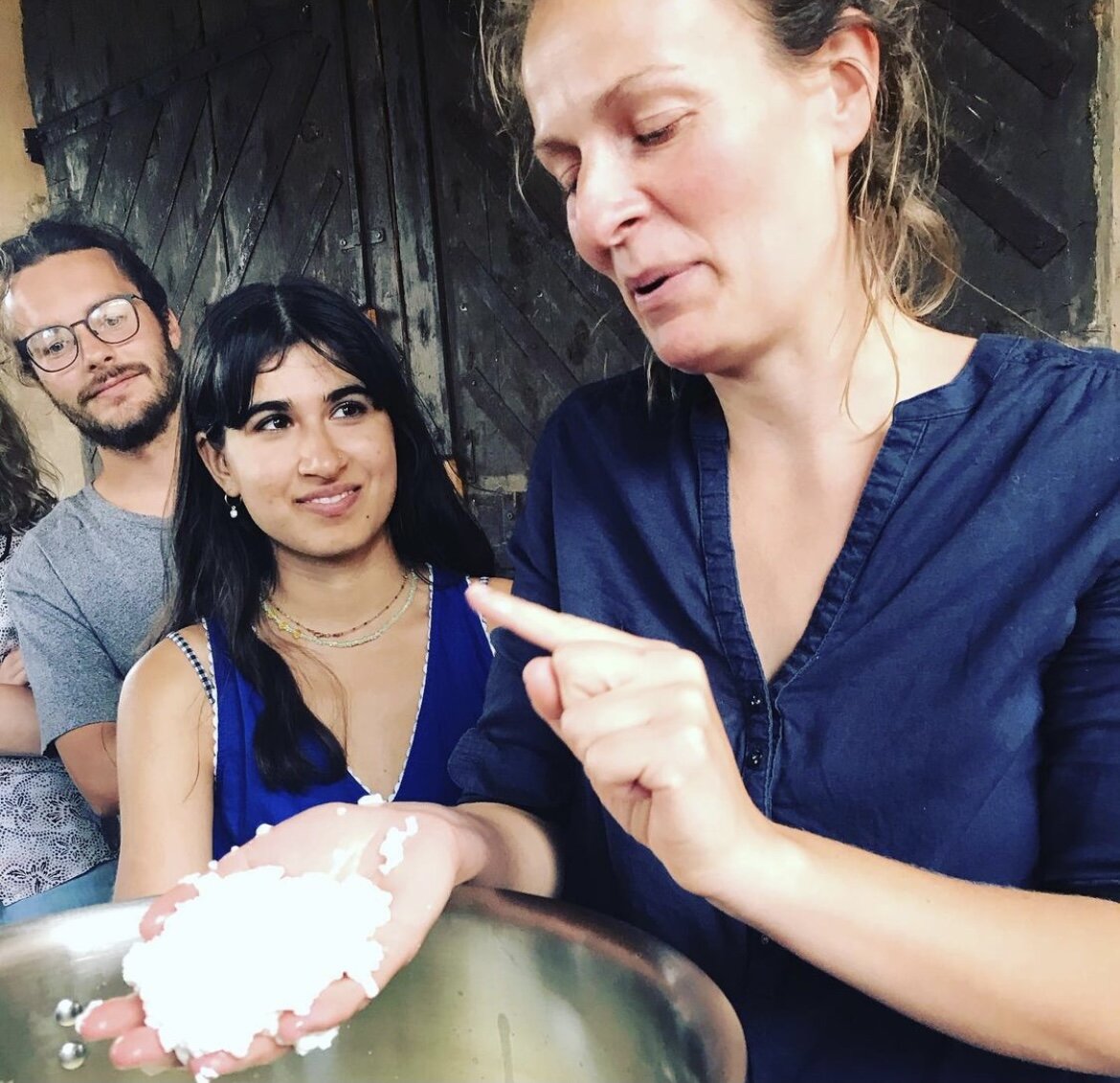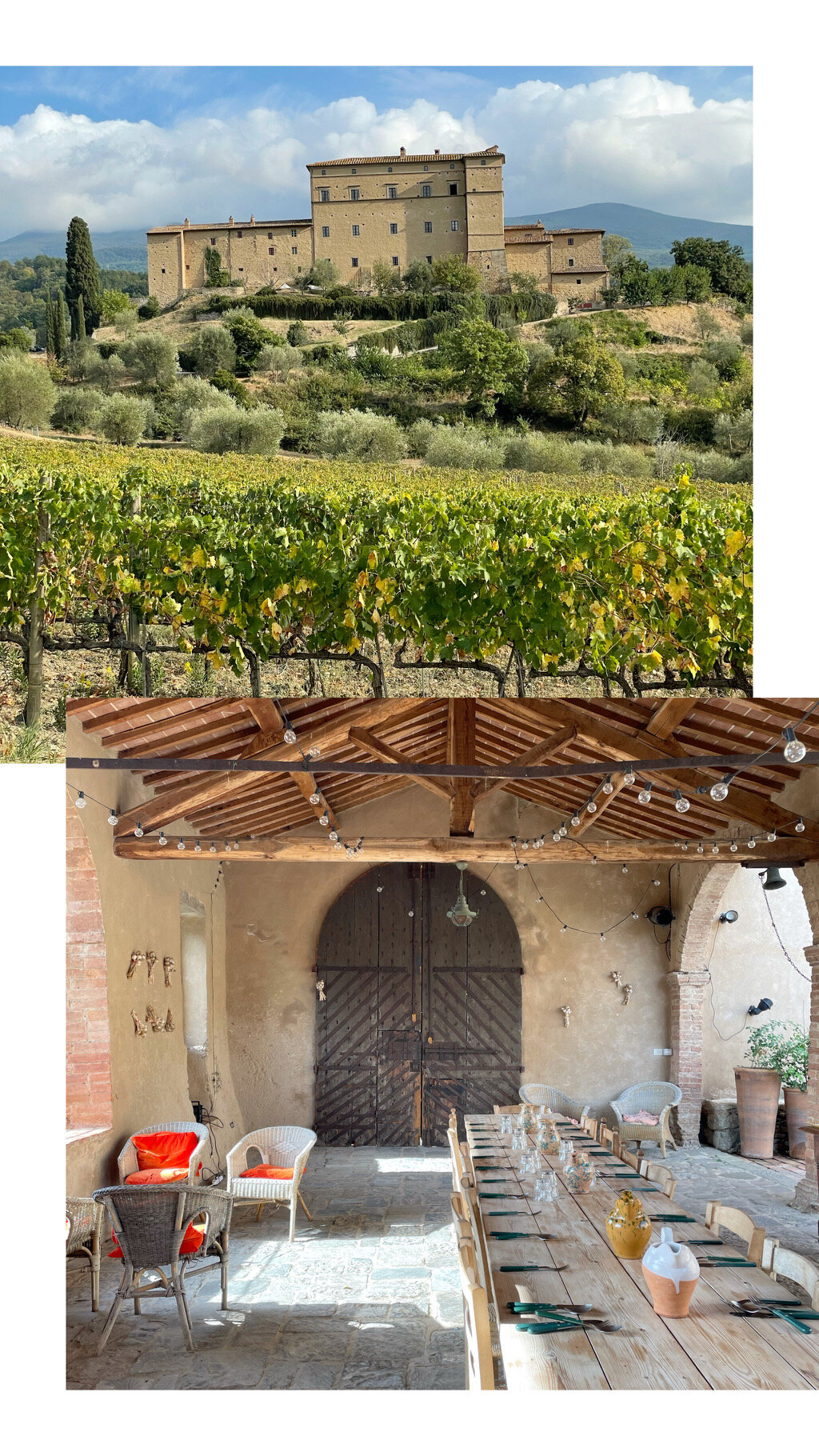Tuscan Traditions: Making Pecorino
/True ricotta is a delicacy many Italians sought after. Its limited availability, combined with the benefits of low fat, high protein and multipurpose use, makes ricotta the cherry on top of any cheese making, and in particular, of our cheese making class today.
‘Best eaten hot’ Luisa tells us, so I obey orders and eat a few mouthfuls. She’s right, one bite of this warm, rubbery cheese, and I can’t put my spoon down. It’s a very intimate feeling, as if I am inside the sheep’s body, and its fresh milk is now directly in my mouth. The right amount of salty and light that makes you want to come back for more.
There’s a particular beauty in seeing others making something in front of your eyes.
Luisa is in charge of the cheese making class. She seems nervous at the prospect of explaining to us how the process goes. There is a German beauty in her blue eyes and soft skin, and as she tells us in perfect English the story of the family business, one can tell she is a very kind and friendly soul. Emiliano, her husband, is staring at her in the background. He is a bit shy I feel, mostly because he can’t speak English with us today.
As I see them both in action, there are so many welcoming thoughts at the idea of making food from scratch. Grandma making croquetas in their flat near Park Guell. Dad and I making a spanish omelette as our Sunday dinner tradition or my uncle’s David famous St Johns Day cake, something that the whole family waits for every year.
Like making tortilla, traditional cheese making is a special craft. One that has been passed through generations. The end result is surprisingly never the same, as cheese made this way never tastes the same twice.
At this point Luisa also names Giuseppe, her father in-law and the main figure of the family business, a few times. Despite his absence, we sense his presence very clearly. He started the business, and on top of being a fantastic shepherd, he was also a novelist, a poet, and of course, a great Italian lover.
Emiliano, on the contrary, seems a man of actions more than words. I am proven right as he shows us the first step of cheese making, getting the ravaggiolo, a curdled cheese that kids and adults alike often enjoy for dessert.
A bite of this silky and sweet cheese takes me back to summer holidays in Costa Brava in Catalonia, where I would find myself eating a very similar dessert called recuit every lunch after our daily family swim. The slippery taste of this dessert makes you feel so light, you would never stop eating it. If you ever are in that part of town, don’t ever leave without trying it, specially with a splash of honey.
As I look away from my treat, I see Luisa and Emiliano are already working on keeping the momentum going. The process of cheese making cannot be stopped and one of them has now started crossing and crushing the remaining cheese in the pot. Crossing the cheese, because in Tuscan tradition, it is blessed in the making.
The pot is now at forty degrees to shape what will be the final product, a soft pecorino cheese. It is hard to believe one could take such heat in their hands, Luisa jokes whilst she cheekily looks at Emiliano: ´he can handle the heat´. Emiliano is not happy about the induction hob, he prefers gas, but with a smile on his face he tells us that heat makes his skin incredibly soft, so clearly worth the pain.
One would think once the cheese has been shaped, we just need to leave it to rest, but to my surprise there’s one more step to go, making ricotta. As we say in Spanish, there’s never two without three, and the last step is the most precious to Italians.
As we now leave the cheese to rest, we are guided to our dininng table.
Now picture you are in a Medieval Tuscan castle.
Imagine the loggia of such Medieval castle. Luisa and Emiliano are finishing making fresh cheese in it.
There’s a certain freshness in the air. The seasons are changing, the wind is blowing strongly, and we are happy to be sun kissed and have our lunch al fresco.
Luisa and Emiliano have prepared a little cheese tasting for us, and as we wait for it with excitement, I hear them talk about the origins of the farm, Caseificio Murceti, with other guests. I can´t wait to visit them at their farm.
I may not be able to replicate all the steps of cheese making that we learned today, but something became clear to me this morning and is that the best traditions can be kept alive through generations, and we can consider ourselves lucky to ever witness such marvels in front of us.
TCB xx










